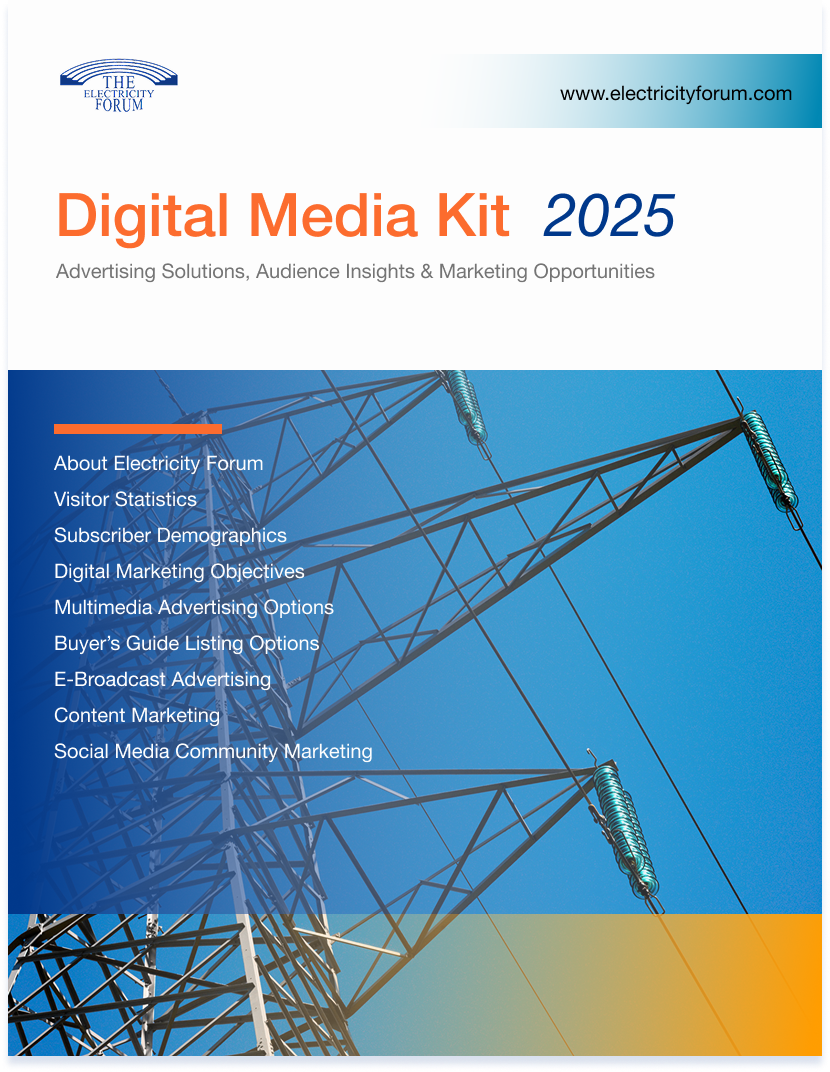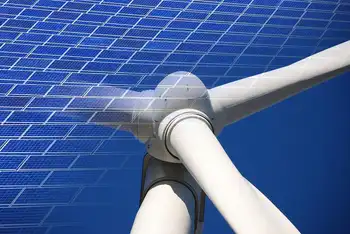Brookfield Renewable moves control center to Marlborough
By MetroWest Daily News
Substation Relay Protection Training
Our customized live online or in‑person group training can be delivered to your staff at your location.

- Live Online
- 12 hours Instructor-led
- Group Training Available
The twin decision is expected to generate 100 jobs.
The company moved into temporary quarters on Donald Lynch Boulevard in February and has since begun the bidding process for construction of the center. It plans to move into its new confines, currently under renovation in a building near the temporary site, in November. The center, to be located in the same building, is expected to become fully functional by the end of next year.
"ItÂ’s about a $2 million investment to bring the headquarters to Marlborough," says Julie Smith-Galvin, BrookfieldÂ’s director of communications in the United States. "That doesnÂ’t include the national system control center. ThatÂ’s a significantly bigger investment."
The exact amount wonÂ’t be known until the bidding process and construction are completed, Smith-Galvin says.
Before the move to Marlborough, Brookfield had its Canadian, American and Brazilian management operations centralized in Gatineau, outside of Ottawa.
"In order to be more nimble and flexible for the growth we see in renewable energy, we thought it was important to move these management centers into the appropriate countries. So now there’s one in Canada – Gatineau; Brazil – Curitiba in the state of Parana; and United States – Marlborough. We’re building up our core management team within each country."
Marlborough was chosen as the site for the U.S. headquarters and national system control center for a number of reasons, according to Smith-Galvin.
"We looked at many different areas," she says. "Some of it was simple geographics in so much as our projects are very heavily based in the New York and New England regions so geographic proximity to our existing projects was a factor.
"More importantly, our number one priority was to recruit and secure the best people and we thought this was the region we could do it in. And we did a lot of demographic studies of where there were high-quality employees. Also, when you look at this area, there is a concentration of energy companies, research institutions and educational facilities."
Brookfield currently has system control centers in New York and Maine. Once the Marlborough center becomes fully functional, these centers will be closed "though Brookfield will continue to maintain staff in these states for the maintenance and operations of our hydropower projects," says Smith-Galvin.
The center, as its name applies, controls the operations of BrookfieldÂ’s plants, including the dispatching of energy, and does so remotely.
BrookfieldÂ’s $13 billion portfolio in hydroelectric plants and wind farms includes U.S. facilities in Massachusetts, Maine, New Hampshire, Maryland, Pennsylvania, West Virginia, Minnesota, New York and Louisiana. Seventy of its generating stations are in New York with 20 in New England. The first U.S. plant was acquired in Maine in 2002.
Its lone Bay State operation is Bear Swamp Power LLC located on the Deerfield River in the Berkshires. All of its facilities in the United States and Brazil generate hydroelectricity with power from 63 river systems. Its only wind farm is located in Ontario. With 126 turbines, itÂ’s one of the largest wind farms in Canada.
In the last 10 years, Brookfield has invested close to $3 billion in acquiring more than 2,900 megawatts of electric capacity in more than 22 transactions.
BrookfieldÂ’s facilities now total more than 4,000 megawatts of electric capacity, of which 95 percent comes from renewable energy. The remaining 5 percent comes from two natural gas plants. Brookfield also has a 6,500 megawatt hydroelectric and wind project pipeline.
The average household in the United States uses 10 megawatt hours of electricity a year. BrookfieldÂ’s origins date back to 1899 with the formation of the Sao Paulo Tramway, Light and Power Co. It subsequently became the largest light and power company in Brazil. Following various acquisitions, incorporations and name changes over the years, Brookfield Renewable Power emerged.
Today, the company, with about 1,000 employees, is owned by Brookfield Asset Management Inc., a $95 billion global asset management company based in Toronto.
Brookfield Renewable Power sells the energy it produces on the merchant market or through bilateral contracts with utilities. "You would never see us on your electricity bill but the power may be coming from us via your utility," says Smith-Galvin.
BrookfieldÂ’s net operating income increased from $172 million in 2003 to $627 million in 2006. It dropped to $615 million in 2007. Smith-Galvin attributes the growth to acquisitions over this time period.
"We hope to continue this growth trajectory as we continue to look for new development and acquisition opportunities," she says. "The company plans to invest $10 billion in renewables over the next five years, a significant portion of which is expected to be made in the United States."
The decrease last year was largely due to lower water flows, says Smith-Galvin. "As a result, generation was lower in 2007 than in 2006. Some of this decline was offset by new facilities acquired or developed in 2007 and 2006 and higher realized pricing," she said.
Overall, the future for renewable energy looks bright, according to Smith-Galvin. For example, nearly 25 states have laws that require utilities to provide renewable energy. Meanwhile, wind farms in the United States now generate more electricity than any other nation. While West Germany has more generating capacity installed, the United States is producing more electricity because of its much stronger winds.
That said, renewable energy constitutes only 9 percent of all the power in the United States. Coal, by comparison, generates 49 percent.
Advantages of renewable energy include its sustainability - it will never run out. Also, its energy facilities generally require less maintenance than traditional generators, according to the National Solar Schools Educational Web site.
More importantly, renewable energy produces little or no waste products, such as carbon dioxide or other chemical pollutants, so it has minimal impact on the environment, the site states.
Disadvantages include the reliance on the weather for its source of power, the site continues. "Hydro generators need rain to fill dams to supply flowing water," it states. "Wind turbines need wind to turn the blades, and solar collectors need clear skies and sunshine to collect heat and make electricity."
Another disadvantage is itÂ’s "difficult to generate the quantities of electricity that are as large as those produced by traditional fossil fuel generators.
Also, while many areas in the United States would be prime locations for wind farms, such as the Plains states, transmission issues pose a problem.
"The American Wind Energy Association states that ‘North Dakota alone is theoretically capable (if there were enough transmission capacity) of producing enough wind-generated power to meet more than a fourth of U.S. electricity demand,’ " says Smith-Galvin. "The problem is transmission restraints. You can put plants there that can harness the energy but you can’t move it to the load centers - to the cities where it’s really needed. People are working on this issue now.
"Transmission is one of the key issues, and I think that it also reflects the need to diversify renewable energy technologies - not just wind but also hydro, solar, biofuels, geothermal - in order to cover different geographic regions, dispatch needs, etc."
Wind farms have also drawn aesthetic complaints.
"With any technology there are footprints and pros and cons," says Smith-Galvin. "With wind or hydro, you just need to find where you have a good resource, and you have to manage the community issues. You have to start that early. ItÂ’s about getting out there and talking to communities early and helping them understand. If they have problems you canÂ’t overcome, you try to find a different place."
With hydroelectric power, the potential for growth is already in place, Smith-Galvin notes. "There are a lot of unused dams in this state that could be used for hydroelectric power," she says. "Only 5 percent of the 70,000 dams in the United States are used for power generation. Not all are appropriate, but thereÂ’s a lot of emphasis on looking at existing resources as alternative energy for fuel-cost reasons and domestic-security reasons."
Green seems to be becoming a popular color. "A recent study showed 92 percent of new graduates want to work for environmentally sensitive companies," says Smith Galvin. "WeÂ’re talking to Marlborough High School about their internship program. Traditionally, weÂ’ve had a large intern program."
As of June, 36 people have been hired at Brookfield. Of those hires, 75 percent have come from Massachusetts. "WeÂ’re on track for 100 new hires within 18 months of opening," says Smith-Galvin.











